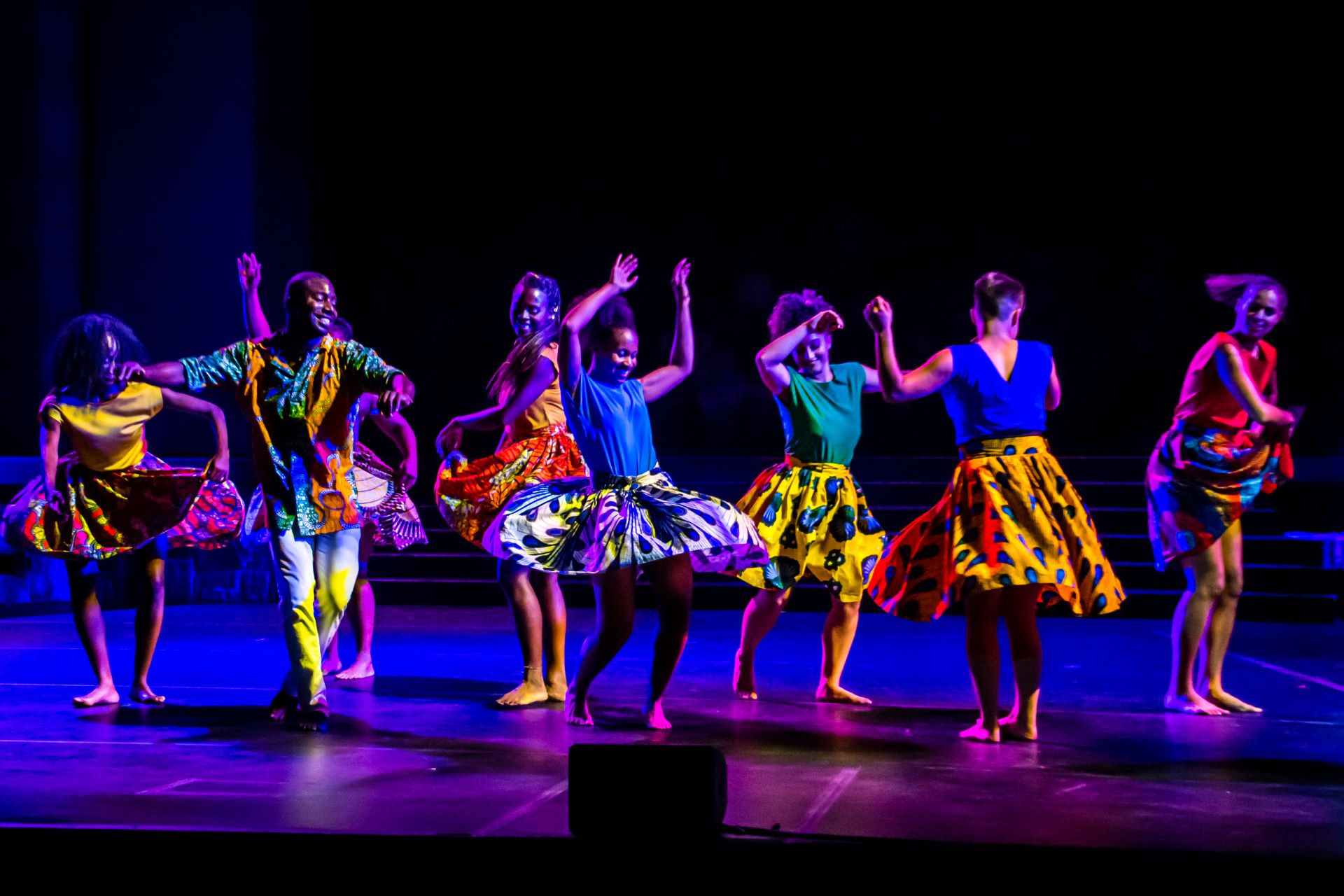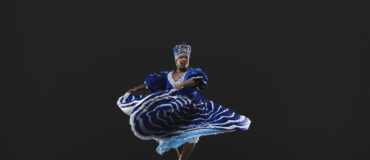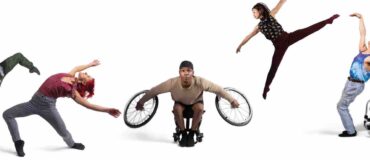By R. Sumi Matsumoto
R. Sumi Matsumoto is a 2020/2021 Dance/USA Archiving & Preservation Fellow. Phase 1 of her Fellowship ran from June-August 2020, and was hosted remotely by World Arts West. For Phase 2 in the summer of 2021, Sumi is continuing her remote work with World Arts West. Read more about the Fellowship program here and read Sumi’s first blog post here.
September 30, 2021
At the end of May, I started Phase 2 of my Dance/USA Archiving & Preservation Fellowship. I was very excited to return to the project and continue my work with World Arts West. I am helping World Arts West create a database and website through which their digital collections and educational content about world dance traditions can be shared with the public. I spent Phase 1 of the fellowship developing metadata structures, databases, and methods to preserve cultural language. As I started Phase 2, this work evolved into helping World Arts West choose a database system to hold their digital materials and the metadata structure I’ve been working on.
Systems to organize digital materials range from just a spreadsheet to database-driven software like DAMS (digital asset management systems). DAMS are centralized storage places for digital content that can organize, manage, annotate, find, and share files. It acts like a digital filing cabinet as well as a library catalogue. There are many different DAMS, and although they all perform the same basic functions, each one offers slightly different services and benefits. World Arts West has not yet finalized their decision of which DAMS to use; I have been able to narrow down the options by considering three main factors: cost, workflow, and fit.
The first major factor is cost. Many DAMS are subscription-based services. Even with nonprofit discounts, these recurring costs can be prohibitively expensive for small organizations. Cost is typically dependent on the amount of storage required and the number of admin accounts. Some DAMS offer add-on features for an additional cost. Dance organizations retain a lot of video content, and unfortunately, high quality digital videos are large files. Since pricing is by storage space, many dance organizations are in a much higher price bracket than comparably-sized organizations in other fields. Video is also less essential to many other fields, and video functionality is considered an add-on for several DAMS. In addition to affording the upfront costs of implementation, it is important to World Arts West to be able to budget for annual costs in succeeding years. Needing to change DAMS after a couple of years due to budget restrictions would be more of a hassle than starting with a less ideal system that will work long-term. There are free DAMS, but these open-source softwares still have a cost. The free options do not have built-in technical support, so they require large amounts of IT staff time. Organizations without technical staff must pay a developer to implement and help maintain the DAMS. This can result in free options being nearly as expensive as subscription-based services.

Te Pura O Te Rahura’a, performing the Polynesian dance forms of Tahiti. Photo by RJ Muna
The second major factor is workflow. A DAMS is a large investment of both money and staff time. It is important to ensure the DAMS will actually be used by lowering the barrier of entry for staff. Thinking about who within the organization will use the DAMS and how they will interact with it helps to formulate a better picture of how the DAMS will be incorporated into existing workflows. A DAMS that is not overly complicated and has a clean user interface will help non-technical staff feel comfortable using it. Having varied user permissions allows volunteers or interns access without admin control. I carefully considered how each DAMS would integrate or replace certain tasks in World Arts West’s current workflows.
The third major factor is fit. All DAMS perform many of the tasks that World Arts West needs their system to do like search, store metadata, and control access permissions. But DAMS also needs to be able to handle the wide range of materials in World Arts West’s collection: from old, obsolete formats to large video files to bibliographic content. Open-source options allow for more customizability, but would take longer to set up. In addition to functionality, I assessed the organizational fit. DAMS are used by many different types of organizations: from nonprofits to global corporations to academic institutions. Looking at what types of organizations use each DAMS helped to find a service whose brand and clientele match World Arts West: nonprofit and performing arts. I especially considered what DAMS are already used by other dance organizations. Having a built-in support network of peer users is not essential, but is a benefit. Collaborating with other dance companies reduces duplication of labor as well as creates consistency across dance archives.
For World Arts West, I compiled a list of over a dozen different DAMS ranging from commercial DAMS to open source options. Some options were obviously not a good fit based on the information publicly available on their website. For eight of the options I talked with sales reps and looked at demos of the software to better understand if the technical capabilities would meet World Arts West’s needs. I considered information organization structures, API and CDN capabilities, data storage, file size limits, and search faceting. For each of the top contenders, I invited a World Arts West staff member and my mentor to join meetings with the DAMS’s sales and technical staff. After outlining the pros and cons of each DAMS, I presented the final three options to the World Arts West Executive Director.
Choosing a DAMS software is ultimately not my decision to make for World Arts West, but I have been able to use my technical expertise to help World Arts West make an informed decision. DAMS software is a long-term investment and commitment, so it should support World Arts West’s current needs as well as have the flexibility to change and grow with the organization. Although there is no perfect option, there are several DAMS that will help World Arts West better utilize their digital assets.
The following is a list of some software services that I researched for World Arts West; this is not an exhaustive list of DAMS. I chose to consider a mix of options: systems currently used by other dance organizations, top-rated commercial services, and software recommended for cultural heritage institutions. I do not endorse any of these companies or their services, and there is no universally “best” option among them.
SaaS (Software as a Service)
SaaS is a cloud-based software subscription; the software is accessible through a website or app but requires an annual payment for continued use (like Microsoft Office 365 or Adobe Creative Cloud).
Bynder
Bynder offers many features to help coordinate the use of digital files across multiple departments within a single organization.
Brandfolder
Brandfolder is designed for multi-brand companies, but is highly customizable with many add-ons and upgrade options.
Cantemo
Cantemo Portal is a media asset management system (MAMS: a type of DAMS) that focuses on audiovisual content, but supports other file types as well.
Canto
Canto was one of the first DAMS developed and is continually updated, but it is focused on internal use rather than collaboration with external contractors.
Libris
Libris offers a DAMS as one of its several services that focus on digital presence and product information management.
NetX
NetX is used by several performing arts organizations and has a generous non-profit discount, but offers slightly less functionality.
Pics.io
Pics.io is an integration with Google Drive to turn it into a DAMS.
Swivle
Swivle is a cost-effective option for small organizations that don’t have large files.
Open-source
Open-source software is when the source code and documentation to the software is freely available for anyone to use, and is intended to encourage collaborative development and personalization. While open-source software is free, all of the following services also offer a paid, SaaS version.
Collective Access
Collective Access is technically a cataloguing tool and not a DAMS, but it can be used to organize digital and physical materials with complex metadata schemas.
Omeka
Omeka is popular with community archives and is focused on sharing digital materials.
Phraseanet
Phraseanet was created by a France-based company and is a powerful DAMS, but requires technical expertise to customize.
Pimcore
Pimcore Platform includes a DAMS in its suite of software that manages digital assets and customer experience.
ResourceSpace
ResourceSpace is designed for cultural heritage or academic institutions, and focuses more on digital assets than metadata.

R. Sumi Matsumoto is pursuing a master’s degree in library and information science at the Pratt Institute, focusing on archival studies. She received her BFA in Dance with a minor in Computer Science from the University of Michigan in Ann Arbor. She is currently the Audiovisual Archivist for the Merce Cunningham Trust. Previously, she worked in the Dance Division of the New York Public Library for the Performing Arts, interned at the Jacob’s Pillow Archives, and volunteered in the archives of the José Limón Dance Foundation. As a dancer, Sumi performed at the Joyce Theater with the José Limón Institute and at MoMA with Ai Dance Theater. Sumi is passionate about dance archiving and is excited to build upon her existing experience through the Dance/USA Fellowship in Dance Archiving and Preservation.
She looks forward to working more closely with dance artists through World Arts West and empowering practitioners of traditional dance forms to build personal archives.
____
We accept submissions on topics relevant to the field: advocacy, artistic issues, arts policy, community building, development, employment, engagement, touring, and other topics that deal with the business of dance. We cannot publish criticism, single-company season announcements, and single-company or single artist profiles. Additionally, we welcome feedback on articles. If you have a topic that you would like to see addressed or feedback, please contact communications@danceusa.org.
Disclaimer: Opinions expressed in guest posts do not necessarily represent the viewpoints of Dance/USA.



